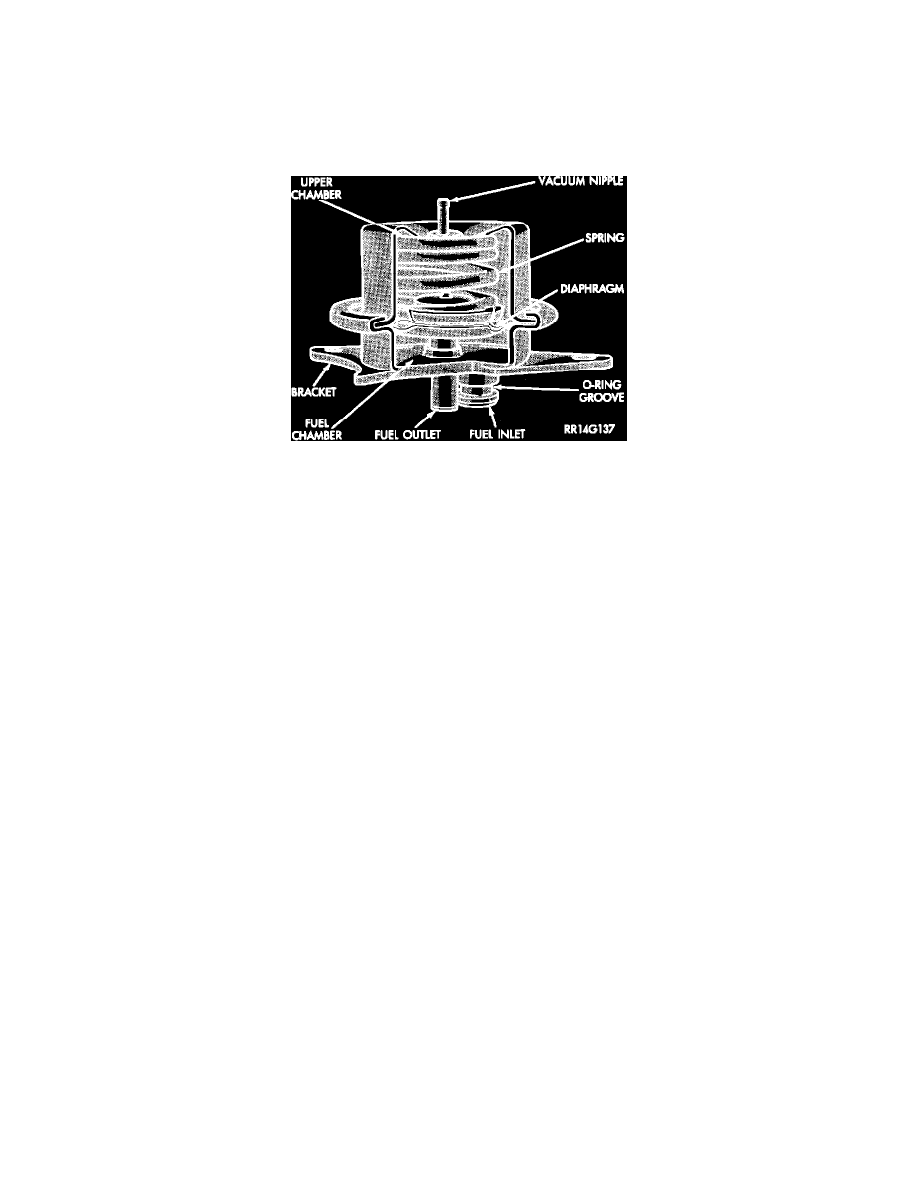Cherokee 4WD L6-242 4.0L VIN S MFI (1992)

Fuel Pressure Regulator: Description and Operation
PURPOSE
The fuel pressure regulator is a mechanical device that is not controlled by the Engine Controller.
OPERATION
Fuel Pressure Regulator Operation (Typical)
The fuel pressure regulator used is a vacuum balanced, nonadjustable type. The regulator is mounted on the output end of the fuel rail and is
connected to intake manifold vacuum. The fuel return tube is connected to the fuel pressure regulator.
The regulator is calibrated to maintain fuel system pressure at approximately 214 kPa (31 psi). This is with vacuum applied while the engine is at
idle. Fuel pressure will be 55-69 kPa (8-10 psi) higher if vacuum is not applied to the regulator.
The fuel pressure regulator contains a diaphragm, calibrated spring and a fuel return valve. Fuel pressure operates on one side of the regulator
while spring pressure and intake manifold vacuum operate on the other side. Spring pressure on the top side of the diaphragm tries to force the
return valve closed. Fuel pressure on bottom side of diaphragm, with assistance from vacuum on spring side of diaphragm, act against spring
pressure to open return valve. System fuel pressure is the amount of fuel pressure required to force against spring pressure and unseat the return
valve.
Without vacuum applied to the spring side of regulator, spring is calibrated to open fuel return outlet. This is done when the pressure differential
between fuel injectors and intake manifold reaches approximately 269 kPa (39 psi). Since manifold vacuum varies with engine operating
conditions, the amount of vacuum applied to the spring side of the diaphragm varies. For this reason, fuel pressure varies depending upon intake
manifold vacuum. With low vacuum, such as during wide open throttle conditions, minimal vacuum assistance is available. Full spring pressure is
exerted to seal the fuel outlet causing system pressure to increase. With high vacuum, such as idle, fuel pressure on bottom of diaphragm is
balanced by intake manifold pressure on spring side of diaphragm. This results in lower system fuel pressure.
